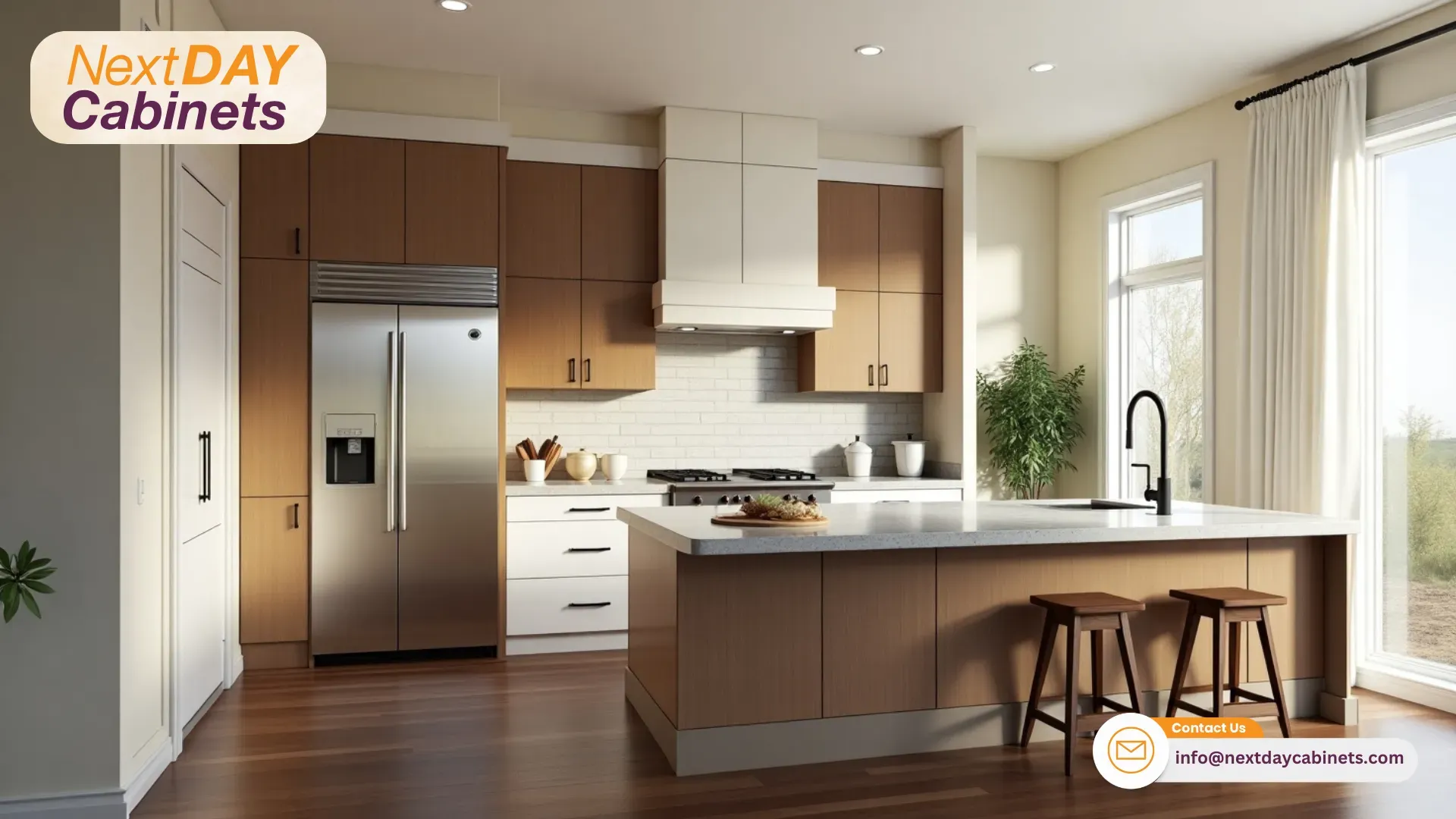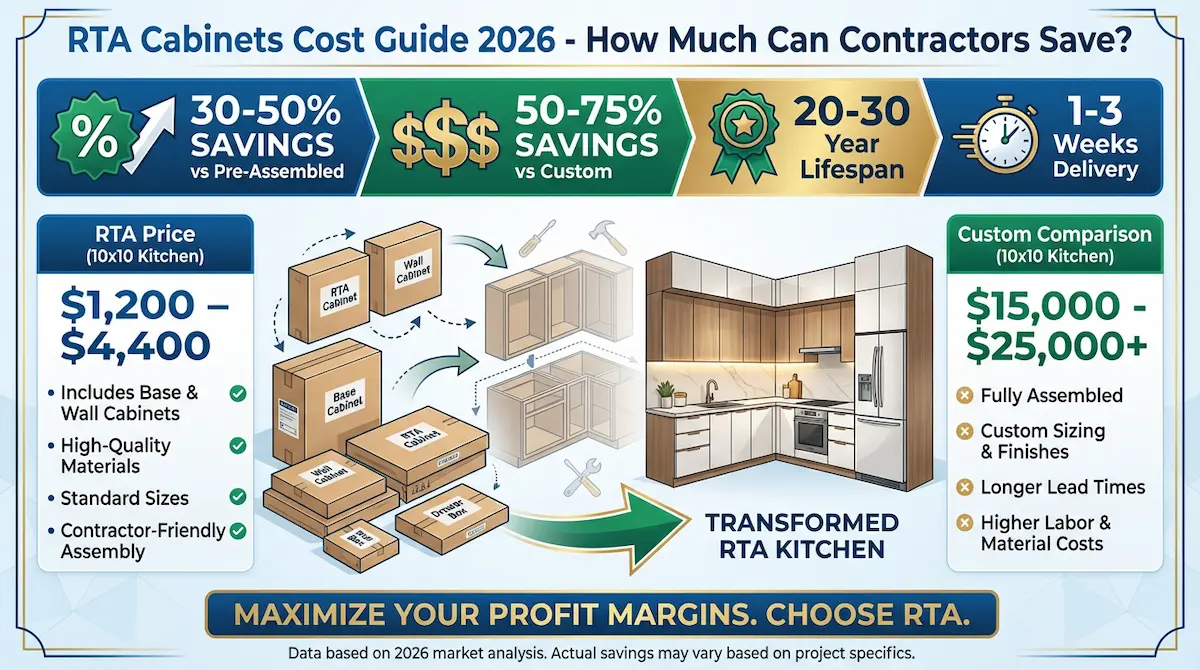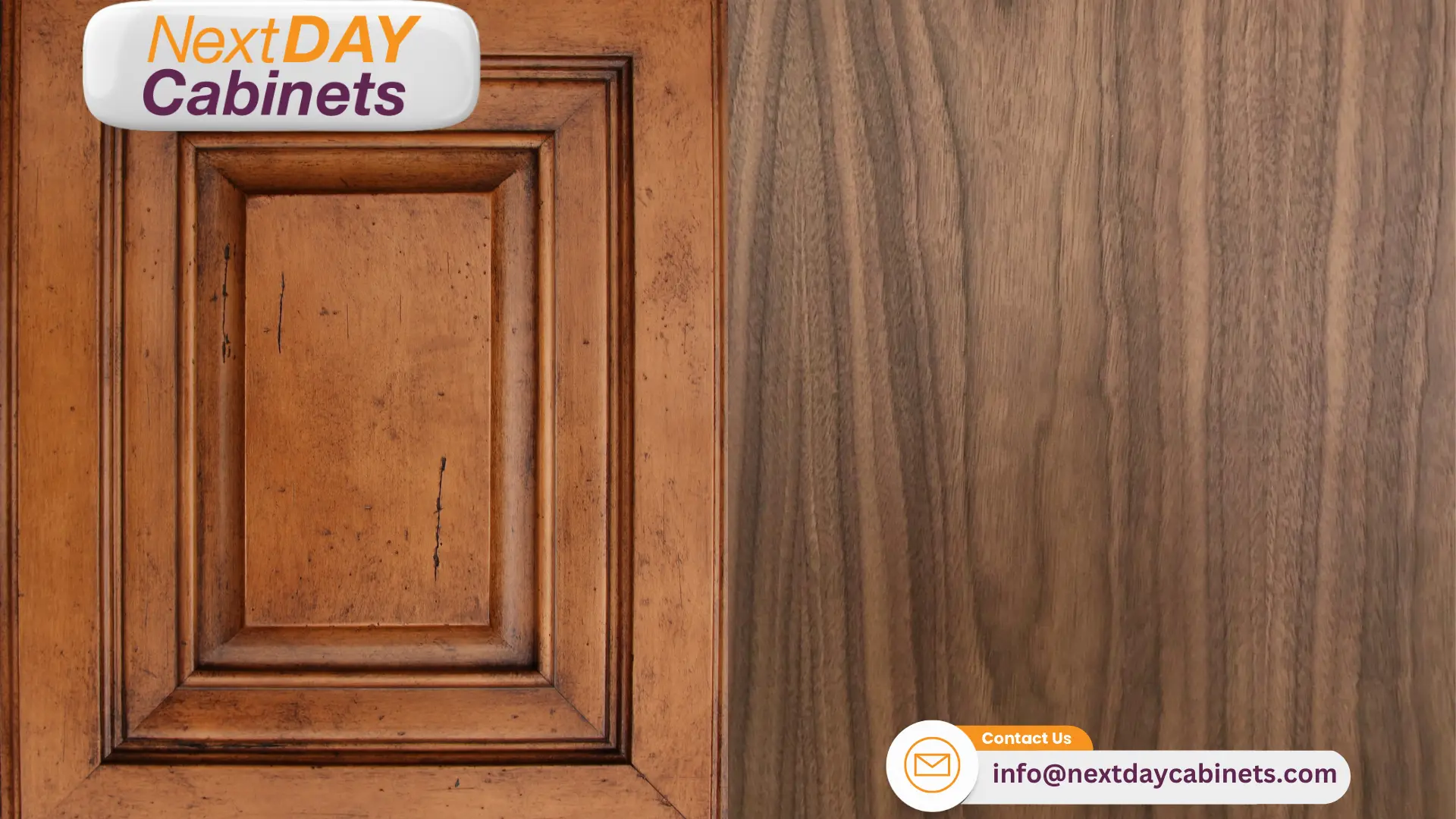
Framed vs. Frameless Cabinets: Which Is Right for You?
Homeowners in Richmond, VA, and throughout Virginia often grapple with the decision between framed and frameless kitchen cabinets when renovating their spaces. These two cabinet styles offer distinct advantages and aesthetics, impacting kitchens’ functionality and visual appeal. Understanding the differences between framed and frameless cabinets is crucial for making an informed choice that aligns with personal preferences and practical needs.
In this article, we’ll explore the key features, pros, and cons of framed and frameless cabinets to help you make the best decision for your home.

Key Takeaways for Framed vs. Frameless Cabinets: Which Is Right for You?
- Traditional vs. Modern Aesthetics: Framed cabinets offer a classic look with structural stability, while frameless cabinets provide a sleek, modern appearance that maximizes storage.
- Budget Considerations: The choice between cabinet styles often hinges on budget, with framed cabinets typically being more affordable than their frameless counterparts.
- Installation Complexity: Installation processes differ significantly; framed cabinets allow for adjustments during installation, whereas frameless cabinets require precise measurements and skilled craftsmanship.
- Overlay Options: Both styles’ visual appeal and functionality depend on overlay options, which influence the visibility of the cabinet frame.
- Architectural Harmony: Matching cabinet styles to the home’s architecture enhances visual coherence, with framed cabinets suiting traditional designs and frameless cabinets fitting contemporary aesthetics.
- Material Differences: Framed cabinets are usually made from solid hardwood, while frameless cabinets often utilize engineered wood products, impacting durability and cost.
- Storage Efficiency: Frameless cabinets maximize interior space with wider drawers and full access, making them ideal for smaller kitchens.
- Durability Considerations: Framed cabinets generally offer superior structural integrity, making them suitable for high-use environments, while frameless cabinets may be less durable in high-traffic areas.
- Cleaning and Maintenance: Frameless cabinets are easier to clean due to their lack of a face frame, while framed cabinets may require more maintenance to keep the visible frame dust-free.
- Customization Options: Framed cabinets provide more customization options regarding door styles and finishes, appealing to homeowners seeking a personalized look.
- Long-term Value: Higher-quality materials in both cabinet types can justify a more significant upfront investment, particularly for homeowners planning to stay long-term.
- Professional Consultation: Engaging with design professionals and reputable cabinet suppliers can help homeowners navigate their options and ensure a successful renovation project.
Understanding the Basics of Framed Cabinets
Framed cabinets, a cornerstone of traditional kitchen design<span style=”font-weight: 400;”>, offer a distinct structural approach compared to their frameless counterparts. NextDAY Cabinets<span style=”font-weight: 400;”>, a leading kitchen cabinetry provider, offers framed and frameless options to suit diverse customer preferences. Framed cabinets feature a face frame attached to the front of the cabinet box, providing additional support and a classic aesthetic. This design choice impacts the cabinet’s appearance, functionality, and installation process, making it a popular option for many homeowners seeking a timeless look in their kitchens.
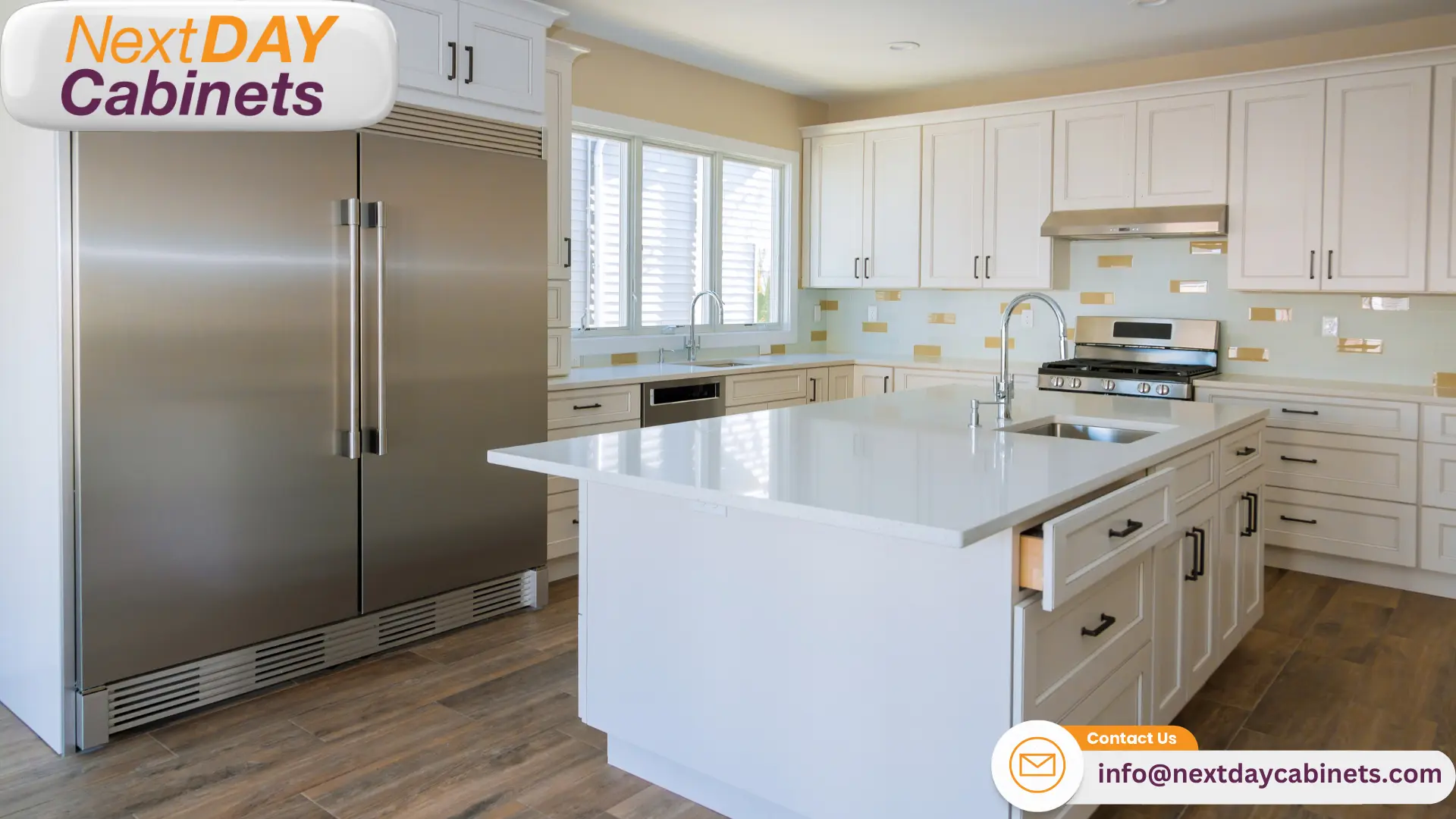
The Structure of Framed Cabinets
Framed cabinets consist of a box-like structure with a face frame attached to the front, distinguishing them from frameless cabinetry. This face frame, typically made of solid wood, provides additional support and stability to the kitchen cabinet, influencing its appearance and functionality.
The frame’s design impacts drawer and door placement, often resulting in slightly reduced accessibility compared to frameless cabinets. However, framed cabinets offer enhanced customization options and a classic aesthetic that many homeowners prefer when selecting their kitchen cabinetry<span style=”font-weight: 400;”>.
Common Uses in Home Design
Framed cabinets are widely used in traditional and transitional home designs, offering a classic aesthetic that complements various architectural styles. Their sturdy construction and ability to incorporate decorative elements make them popular choices for homeowners seeking a timeless look in their kitchens, bathrooms, and other living spaces.
While frameless construction has gained popularity in modern design, framed cabinets remain a staple in many homes due to their versatility and ability to create a warm, inviting atmosphere. The visible frame adds depth and character to the cabinetry, allowing for intricate wood detailing and custom finishes that enhance the overall aesthetics of the space.
Delving Into Frameless Cabinets
Frameless cabinets represent a departure from traditional framed designs, offering a sleek and modern aesthetic that has gained popularity in contemporary kitchen and bathroom renovations. This innovative construction method eliminates the face frame, resulting in a minimalist appearance and increased storage capacity.
Frameless cabinets utilize advanced hinge technology and sturdy materials to ensure stability without a frame, allowing for seamless integration with countertops and other design elements. As homeowners increasingly seek clean lines and efficient use of space, frameless cabinets have become a go-to choice for creating a streamlined and functional living environment.
The Design Philosophy Behind Frameless Cabinets
Frameless cabinets embody a minimalist design<span style=”font-weight: 400;”> philosophy that prioritizes clean lines and maximizes storage space. This approach eliminates the need for a traditional picture frame-like structure, allowing for wider drawers and doors that extend to the cabinet’s full width. The absence of stiles and rails creates a seamless appearance, appealing to those who prefer a modern aesthetic in their kitchen or bathroom<span style=”font-weight: 400;”>.
The design of frameless cabinets also considers floor space efficiency, as the lack of a frame allows for a slightly larger interior storage capacity. This philosophy aligns with contemporary preferences for streamlined, uncluttered spaces, making frameless cabinets popular among homeowners and designers seeking a sleek, European-inspired look.
While some may argue that frameless cabinets lack the structural integrity of their framed counterparts, advancements in materials and construction techniques have primarily addressed these concerns.
Application in Modern Kitchens and Bathrooms
Frameless cabinets have become increasingly popular in modern kitchens and bathrooms due to their sleek aesthetic and efficient use of space. These cabinets maximize storage capacity by eliminating the face frame, allowing wider drawers and full access to the cabinet box. This design choice proves particularly beneficial in compact spaces, where every inch counts in home improvement projects.
The clean lines of frameless cabinets complement contemporary appliances, such as built-in refrigerators, creating a cohesive look in modern kitchens. Their versatility allows easy customization to fit various budget constraints while maintaining a high-end appearance. The absence of a frame also facilitates easier cleaning and maintenance, making frameless cabinets a practical choice for busy households.
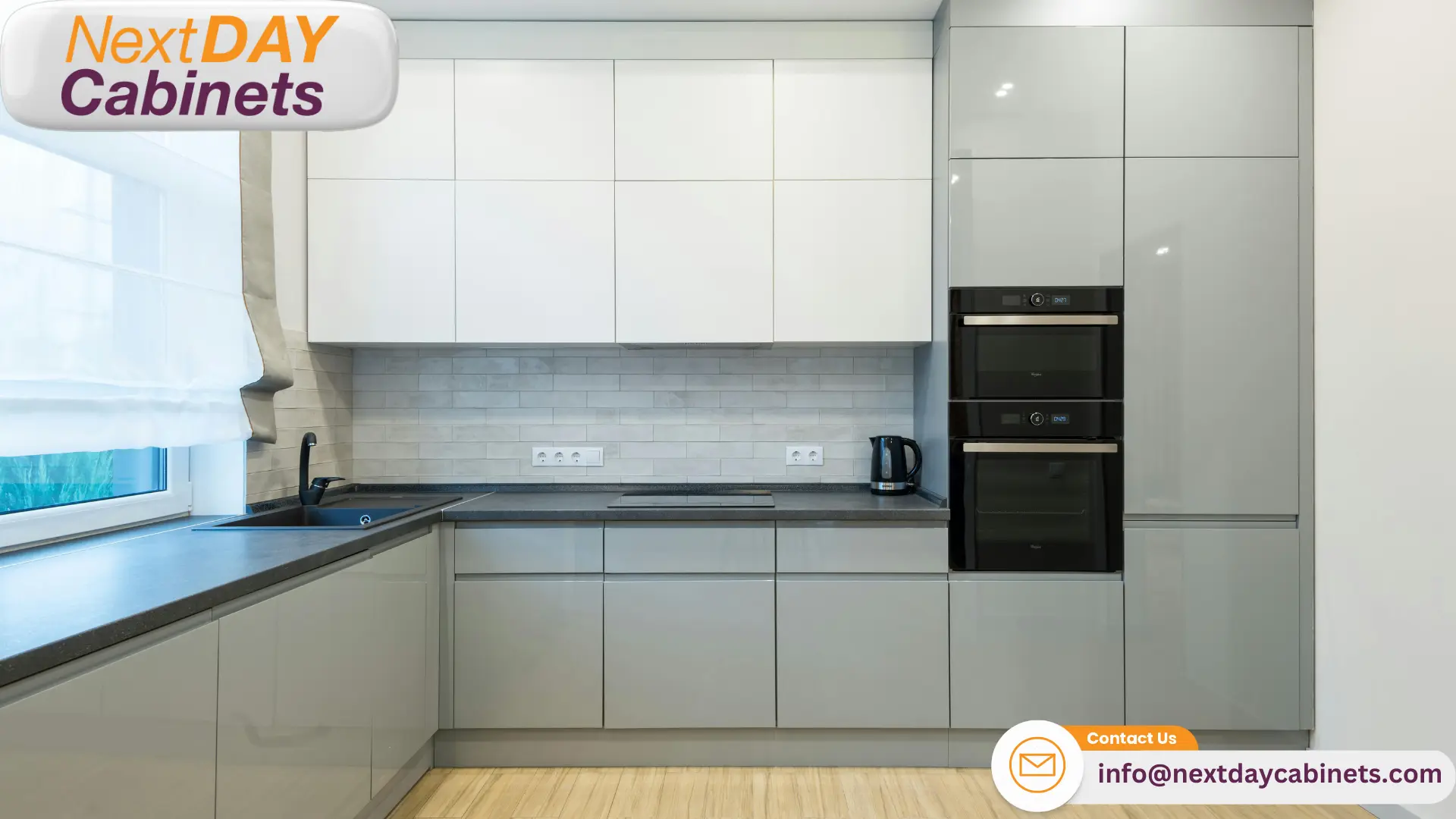
Comparing Construction Methods and Material Use
Framed and frameless cabinets’ construction methods and material choices significantly impact their durability, aesthetics, and functionality. Framed cabinets typically employ hardwood for the face frame and door construction, providing a sturdy foundation that can withstand heavy use. In contrast, frameless cabinets often utilize engineered wood products and rely on precise joinery techniques to ensure stability. These differences in build techniques affect the cabinet’s appearance and practicality for various users, including those with disabilities who may require specific accessibility features.
Additionally, the choice between framed and frameless cabinets can influence the integration of appliances, such as dishwashers, into the kitchen design<span style=”font-weight: 400;”>.
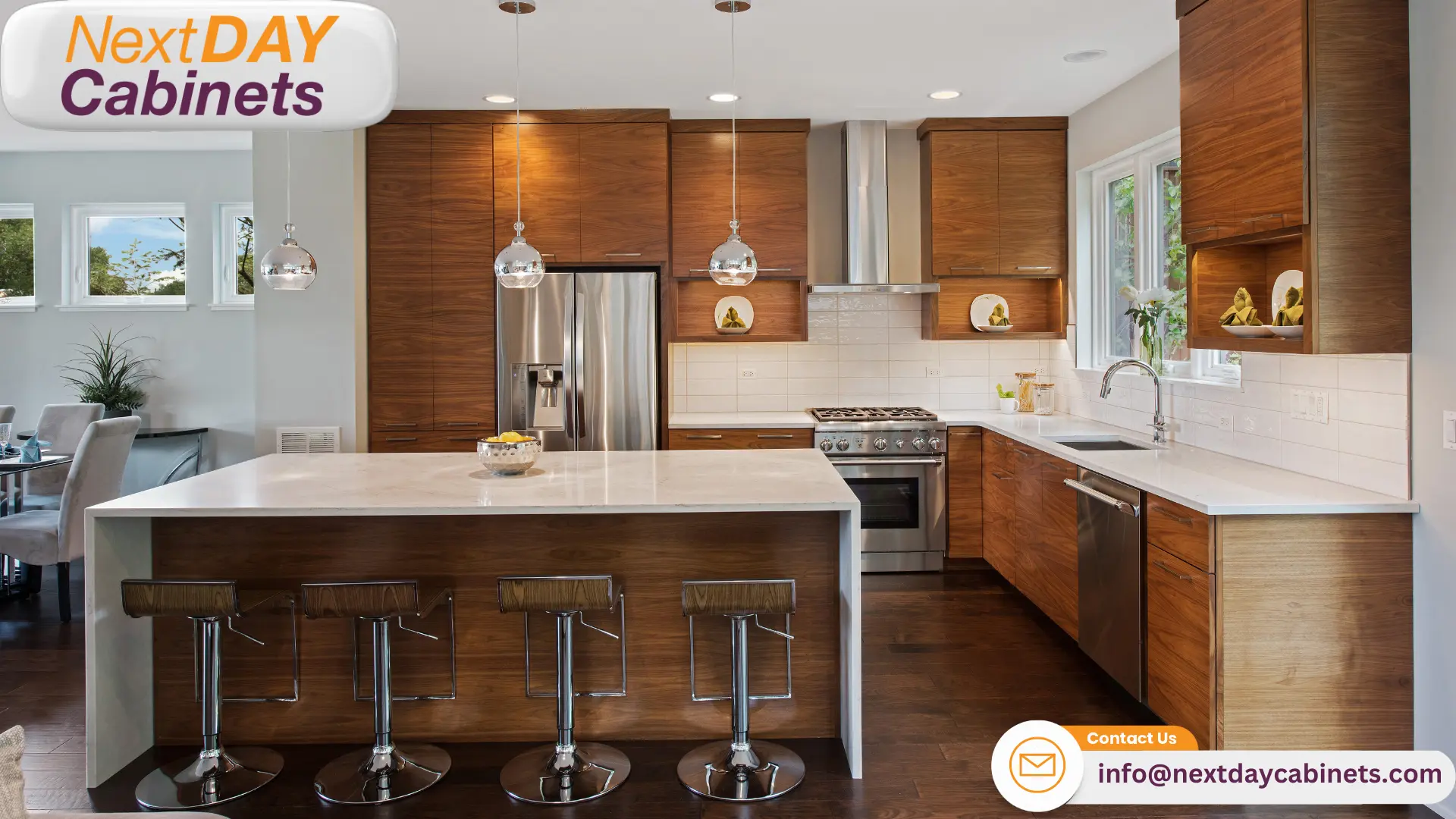
Differences in Build Techniques
Framed cabinets rely on a traditional construction method that incorporates a face frame, typically made of solid hardwood, attached to the front of the cabinet box. This frame provides structural support and allows for various door mounting options, including full overlay, partial overlay, and inset designs. The frame also serves as a mounting point for hinges, enhancing the cabinet’s overall stability.
On the other hand, Frameless cabinets employ a more modern construction technique that eliminates the face frame. These cabinets depend on thicker box construction, usually made from engineered wood products like plywood or particle board with a laminate or wood veneer finish. The lack of a frame necessitates using specialized European-style hinges that attach directly to the cabinet’s side walls. This design choice results in:
- Increased interior storage space
- Wider drawer boxes
- A sleeker, more contemporary appearance
- Easier access to cabinet contents
Material Preferences for Each Type
Framed cabinets typically utilize solid hardwood for their face frames, doors, and drawer fronts. Manufacturers often choose oak, maple, or cherry for their durability and aesthetic appeal, providing a traditional look that many homeowners prefer.

Frameless cabinets frequently employ engineered wood products such as medium-density fiberboard (MDF) or plywood for cabinet boxes and doors. These materials offer stability and resistance to warping while allowing for a sleek, modern appearance. The choice of materials for each cabinet type significantly impacts their overall cost, durability, and design possibilities:
| Feature | Framed Cabinets | Frameless Cabinets |
|---|---|---|
| Primary Materials | Solid hardwood | Engineered wood products |
| Common Wood Types | Oak, maple, cherry | MDF, plywood |
| Finish Options | Stained, painted | Laminate, wood veneer, painted |
| Durability | High | Moderate to high |
| Cost | Generally higher | Often more affordable |
The Pros & Cons of Framed Cabinets
Framed cabinets, a staple in traditional kitchen design, offer distinct advantages and drawbacks that merit careful consideration when planning a kitchen renovation. Characterized by their face frame construction, these cabinets provide structural stability and a classic aesthetic that appeals to many homeowners. However, they also present certain limitations that may influence a buyer’s decision.
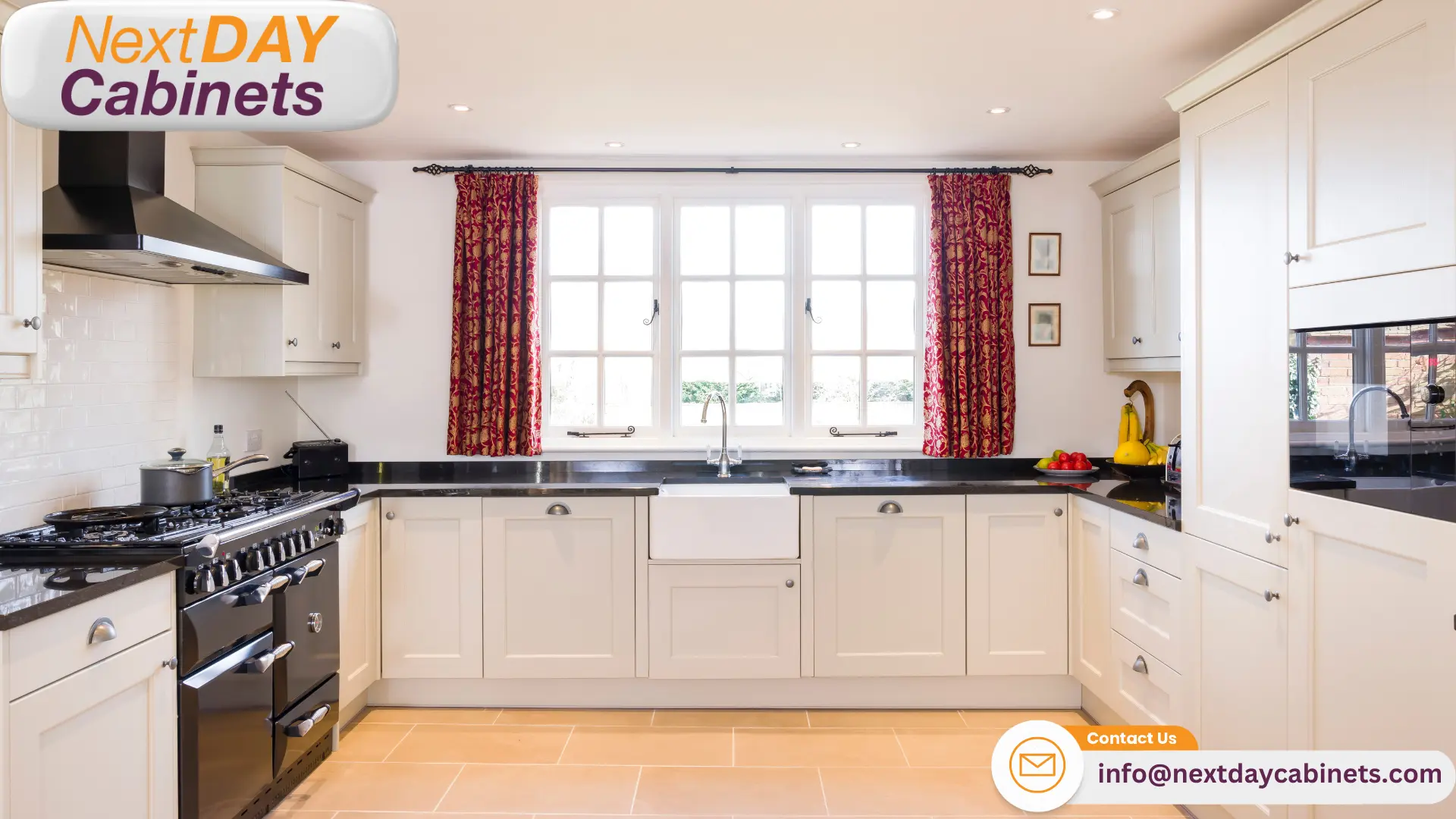
Understanding the pros and cons of framed cabinets is essential for making an informed choice between framed and frameless options, especially when working with a cabinet provider like NextDAY Cabinets, which offers both styles to cater to diverse customer preferences.
Advantages of Opting for Framed Cabinets
Due to their face frame construction, framed cabinets offer superior structural integrity. This design provides enhanced stability and durability, particularly suitable for heavy-use kitchen environments. The solid wood frame also allows for easier adjustments during installation, ensuring a precise fit even in homes with uneven walls or floors.
Framed cabinets’ versatility extends to their aesthetic appeal, accommodating various door styles and finishes. Homeowners can choose from full overlay, partial overlay, or inset door designs, each offering a distinct look that complements different interior styles. This flexibility in design options makes framed cabinets popular for those seeking a customized kitchen appearance.
Potential Drawbacks to Consider
Framed cabinets present a few potential drawbacks that homeowners should consider before purchasing. The face frame reduces the overall interior storage space compared to frameless cabinets, limiting the width of drawers and potentially affecting the accessibility of corner cabinets. This design characteristic may pose challenges for those seeking to maximize storage capacity in smaller kitchens.
The traditional aesthetic of framed cabinets might need to align with contemporary design preferences, potentially limiting options for those desiring a more modern look. Additionally, the visible frame can accumulate dust and debris more easily than frameless alternatives, requiring more frequent cleaning to maintain a polished appearance. These factors may influence the decision-making process for homeowners weighing the benefits of framed versus frameless cabinetry.
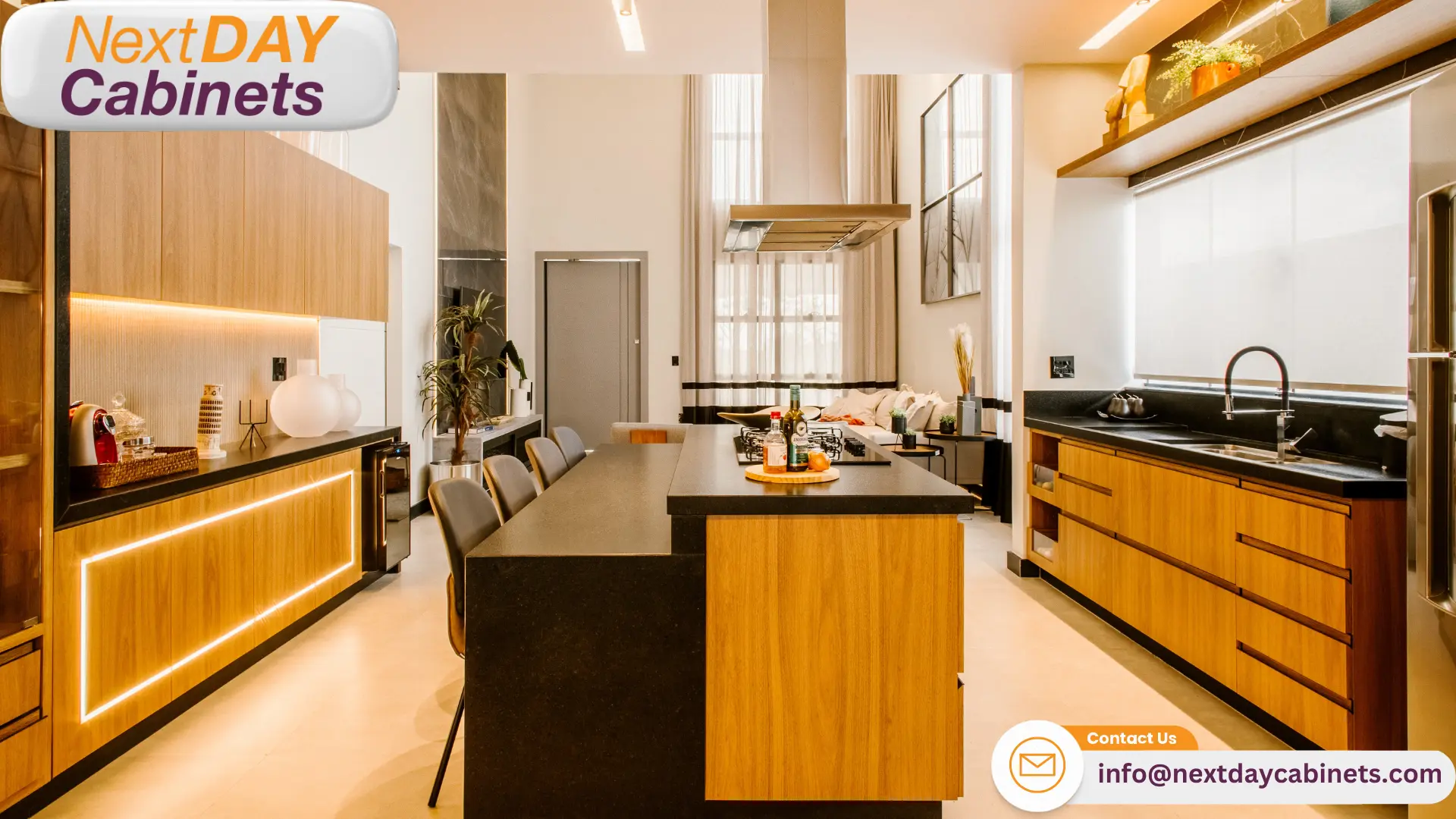
Evaluating the Pros & Cons of Frameless Cabinets
Frameless cabinets, also known as European-style cabinets, have gained popularity in modern kitchen design due to their sleek appearance and efficient use of space. These cabinets offer a range of benefits, including maximized storage capacity and a contemporary aesthetic that appeals to many homeowners. However, they also come with limitations that may affect their suitability for some kitchen designs or preferences. Understanding frameless cabinets’ advantages and potential drawbacks is important when choosing between framed and frameless options for a kitchen renovation or new construction project.
Why Choose Frameless Cabinets?
Frameless cabinets offer a sleek, modern aesthetic that appeals to homeowners seeking a contemporary kitchen design. Their clean lines and absence of visible hardware create a seamless appearance, enhancing the overall look of the space. This design choice allows for more streamlined integration with appliances and countertops, resulting in a cohesive and visually appealing kitchen environment.
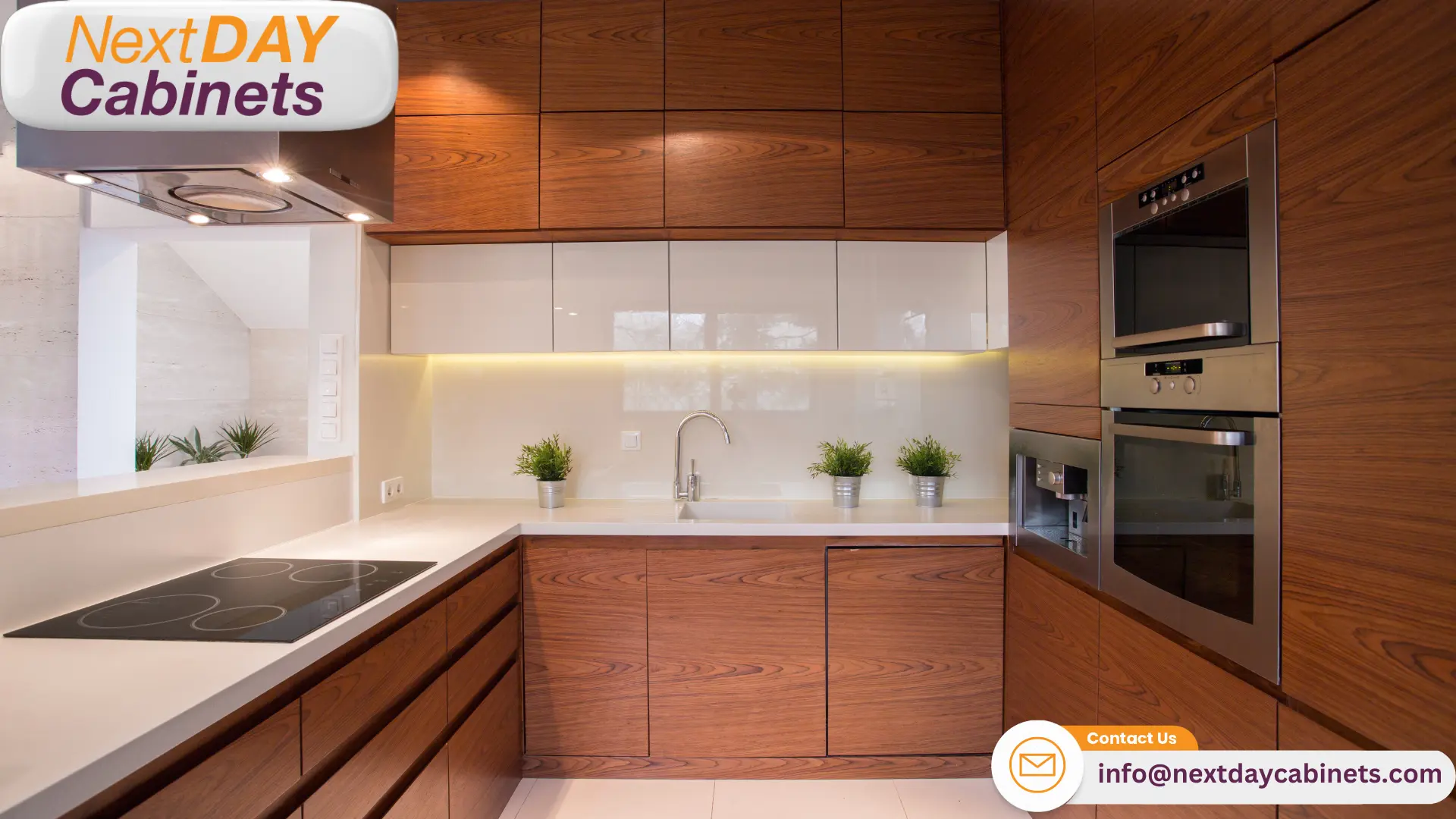
Frameless cabinets’ increased storage capacity presents a significant advantage for homeowners with limited space. The elimination of the face frame allows for wider drawers and full access to the cabinet interior, maximizing storage efficiency. This feature is particularly beneficial in smaller kitchens or those requiring ample storage for cookware and kitchen gadgets.
Limitations and Concerns
Frameless cabinets present installation challenges due to their need for a face frame. This construction method requires precise measurements and skilled craftsmanship to ensure proper alignment and stability. This method may reduce durability compared to framed cabinets, particularly in high-traffic kitchens or homes with young children. The absence of a frame also limits the ability to make adjustments during installation, potentially leading to visible gaps or misalignments in finished projects.
The modern aesthetic of frameless cabinets may not complement traditional home designs, potentially limiting their appeal in certain architectural styles. Additionally, frameless cabinets cost more than their framed counterparts, particularly when opting for high-quality materials and hardware to ensure longevity and stability. These factors may influence homeowners‘ decisions when choosing between framed and frameless options for their kitchen renovations.
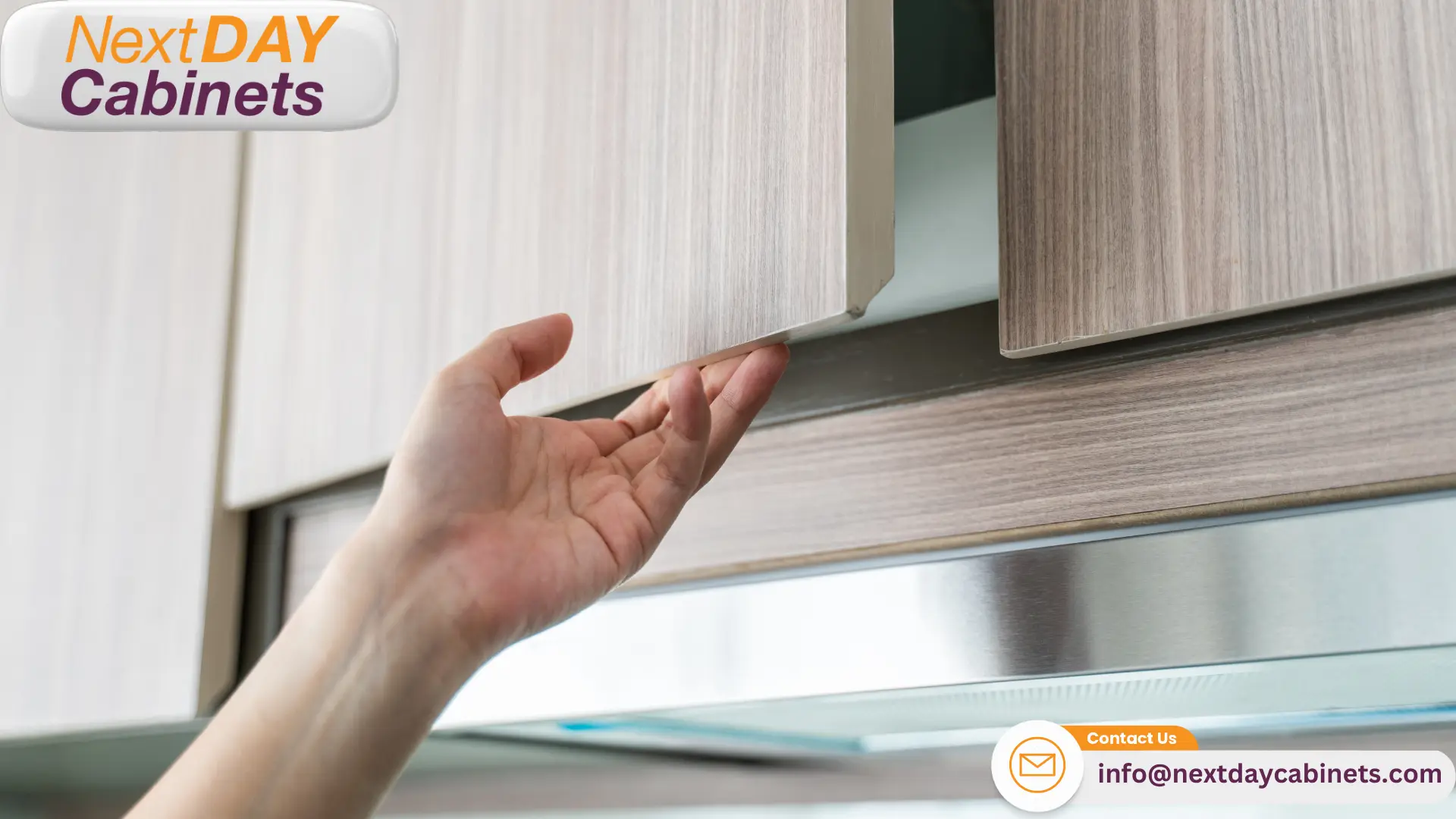
Installation Process for Framed vs. Frameless Cabinets
The installation process for framed and frameless cabinets differs significantly, reflecting their distinct structural designs and mounting requirements. Framed cabinets, with their traditional face frame construction, offer more flexibility during installation, allowing adjustments to compensate for uneven walls or floors. Conversely, frameless cabinets demand precise measurements and careful planning to ensure a seamless fit, as their construction leaves little room for error.
Understanding these differences is crucial for DIY enthusiasts and professional installers, as it impacts the time, tools, and techniques required to achieve a polished, functional kitchen layout.
Framed Cabinet Installation Steps
Installing framed cabinets begins with measuring and marking the floor’s high point and establishing a level line for the base cabinets. Installers then secure a ledger board to the wall, ensuring a straight and level surface for mounting the cabinets. This process allows adjustments to accommodate uneven walls or floors, a common challenge in older homes.
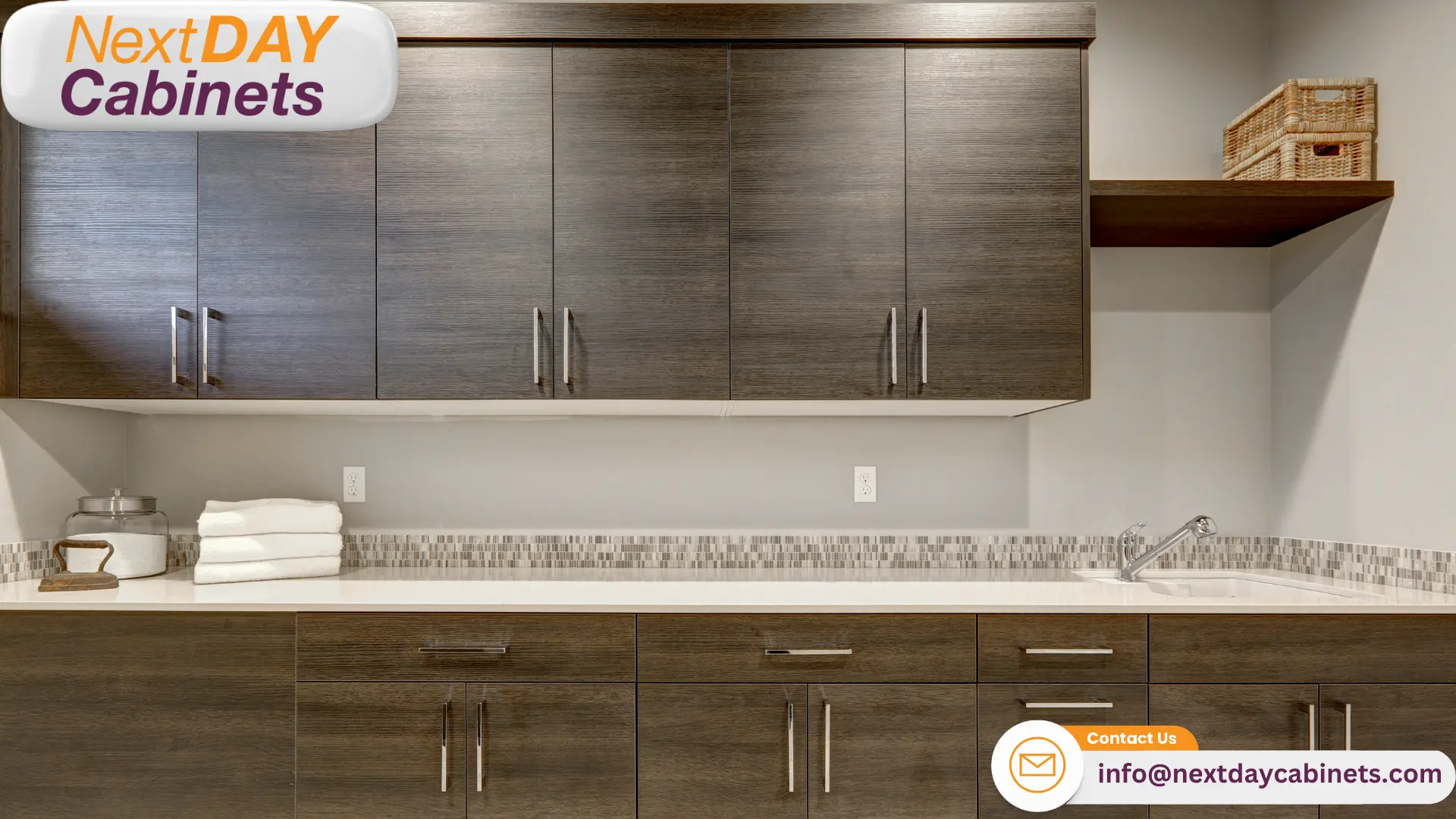
The following steps involve positioning and securing the cabinets to the wall and each other, starting with corner units and progressing along the line. Installers use shims to level and plumb each cabinet before the final attachment. This process requires attention to detail and often includes:
- Drilling pilot holes for screws to prevent wood splitting
- Using clamps to hold cabinets in place during attachment
- Adjusting door hinges and drawer slides for proper alignment
- Installing filler strips to close gaps between cabinets and walls
Frameless Cabinet Installation Overview
Frameless cabinet installation requires meticulous planning and precise measurements to ensure a perfect fit. Installers must create a detailed layout plan, accounting for appliances and fixtures, before beginning the installation process. This preparation phase often involves using laser levels and plumb bobs to establish accurate reference points for cabinet placement.
The installation begins with mounting a sturdy support rail to the wall, which serves as a foundation for the upper cabinets. Installers then hang the cabinets, starting with corner units and progressing along the support rail. Special attention must be paid to maintaining consistent gaps between cabinets and ensuring proper alignment of doors and drawers. Frameless cabinets often require additional support brackets and careful handling to prevent damage to the exposed edges during installation.
Aesthetic and Functional Overlays in Cabinetry
Overlays are crucial in framed and frameless cabinet designs, influencing their aesthetic appeal and functionality. In framed cabinets, overlays determine how much of the face frame remains visible, affecting the kitchen’s overall look. Despite lacking a traditional face frame, Frameless cabinets still incorporate overlay concepts in their design, particularly in how doors and drawers interact with the cabinet box.
Understanding these overlay options helps homeowners and designers make informed decisions about cabinet styles that best suit their space and preferences, balancing visual appeal with practical considerations such as ease of access and cleaning.
Types of Overlays in Framed Cabinets
Framed cabinets offer three primary overlay options: total, partial, and inset. Full overlay doors and drawers cover most of the face frame, leaving minimal exposed frames and creating a sleek, modern appearance. Partial overlay, or standard overlay, leaves more of the face frame visible, resulting in a traditional look with a clear definition between cabinet components.
Inset doors and drawers sit flush with the face frame, creating a seamless, refined aesthetic often associated with high-end cabinetry. This style requires precise craftsmanship to ensure proper fit and functionality. Each overlay type impacts the cabinet’s visual appeal and practical aspects, such as ease of cleaning and storage accessibility.
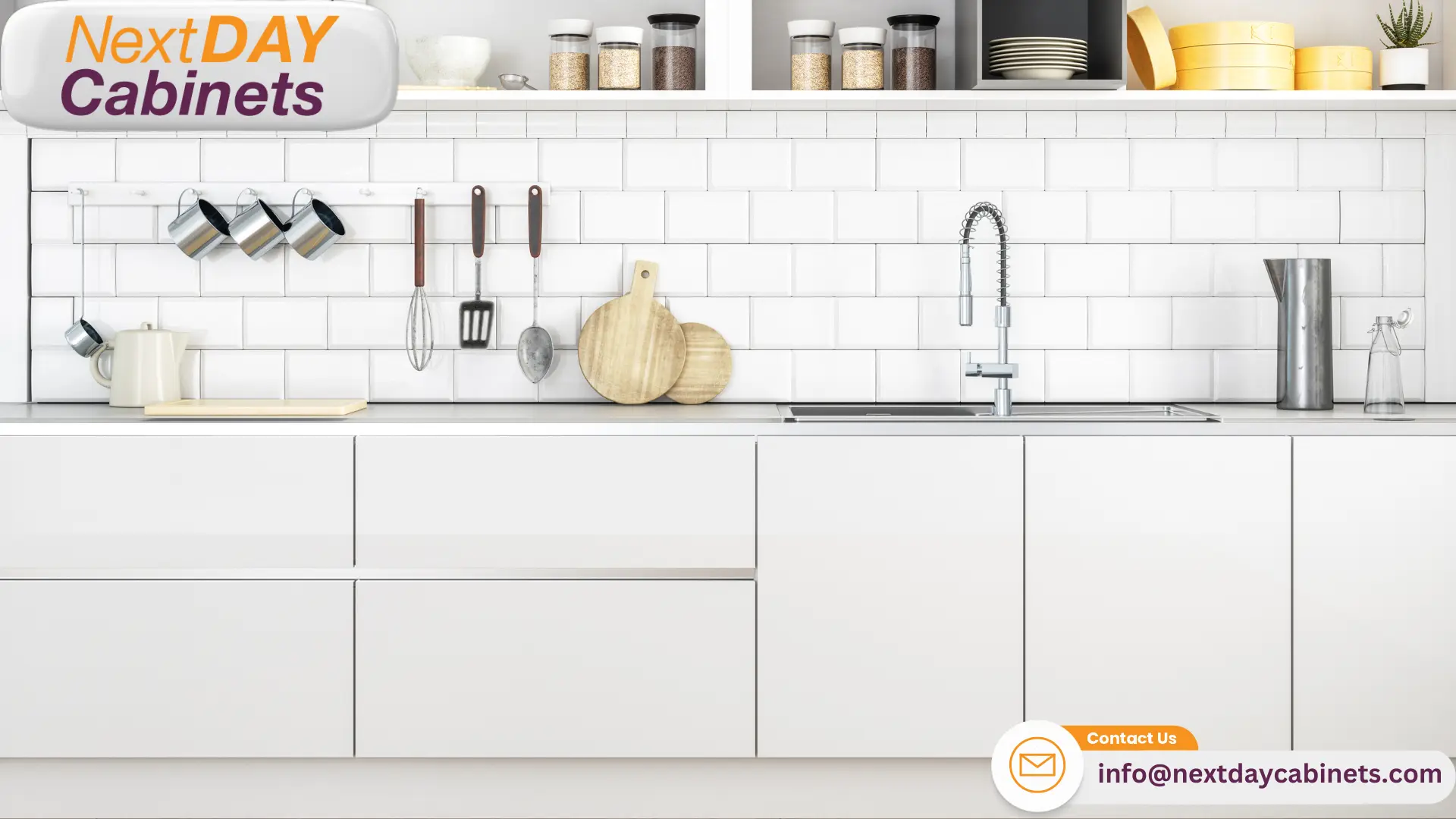
Integrating Overlays With Frameless Designs
Frameless cabinets utilize a complete overlay design by default, as doors and drawers cover the entire cabinet box edge. This creates a seamless, modern appearance with minimal gaps between components. Designers can enhance this aesthetic by incorporating specialized hardware and edge treatments to achieve specific visual effects.
While frameless cabinets lack a traditional face frame, they offer overlay options through different door and drawer styles. These options include:
- Slab doors for a minimalist look
- Shaker-style doors for a transitional aesthetic
- Glass-front doors to showcase contents
- Decorative edge profiles to add visual interest
Making the Right Choice for Your Home
Selecting between framed and frameless cabinets requires careful consideration of various factors, including budget, aesthetic preferences, and functional needs. Homeowners must weigh the pros and cons of each style to determine which option best aligns with their vision for their living space. Beyond practical considerations, matching cabinet styles to a home’s overall architectural design is crucial in creating a cohesive and visually appealing interior.
By understanding the key elements that influence cabinet selection and learning how to harmonize cabinetry with existing home styles, individuals can make informed decisions that enhance both the functionality and aesthetic appeal of their kitchens and bathrooms.
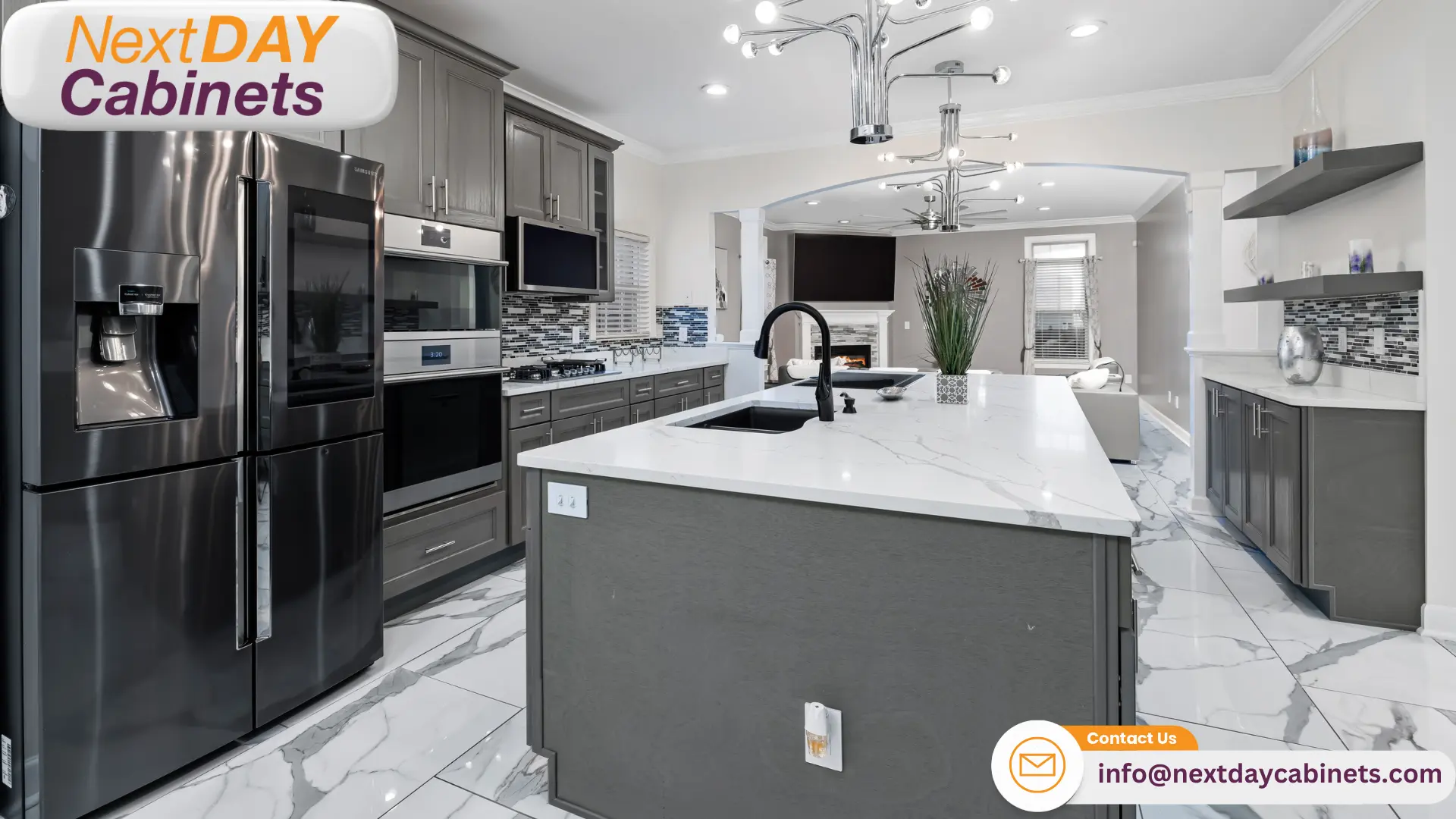
Factors to Consider When Choosing Cabinets
Budget constraints often guide cabinet selection, with framed options typically offering more affordable choices. Homeowners must balance cost considerations with desired features, such as soft-close drawers or custom finishes, to find the best value for their investment. The intended longevity of the cabinetry also plays a role, as higher-quality materials and construction methods may justify a more significant upfront expense for those planning long-term residence.
Storage needs and kitchen layout significantly influence cabinet choice. Frameless cabinets maximize interior space, benefiting smaller kitchens or those requiring extensive storage. Accessibility requirements, such as pull-out shelves or lower countertop heights, may favor one cabinet style. The home’s overall aesthetic and the desired kitchen ambiance also guide the decision between traditional framed and modern frameless designs.
Tips for Matching Cabinets to Your Home’s Style
Matching cabinet styles to a home’s architecture enhances visual coherence and appeal. Traditional homes often benefit from framed cabinets with raised panel doors, while modern or contemporary spaces pair well with frameless cabinets featuring sleek, minimalist designs. Transitional homes offer flexibility, allowing for a blend of classic and modern elements in cabinetry choices.
Color selection plays a crucial role in harmonizing cabinets with existing decor. Homeowners should consider the following factors when choosing cabinet colors and finishes:
- Existing color schemes in adjacent rooms
- Natural light levels in the kitchen or bathroom
- Desired mood or atmosphere for the space
- Potential resale value and broad appeal
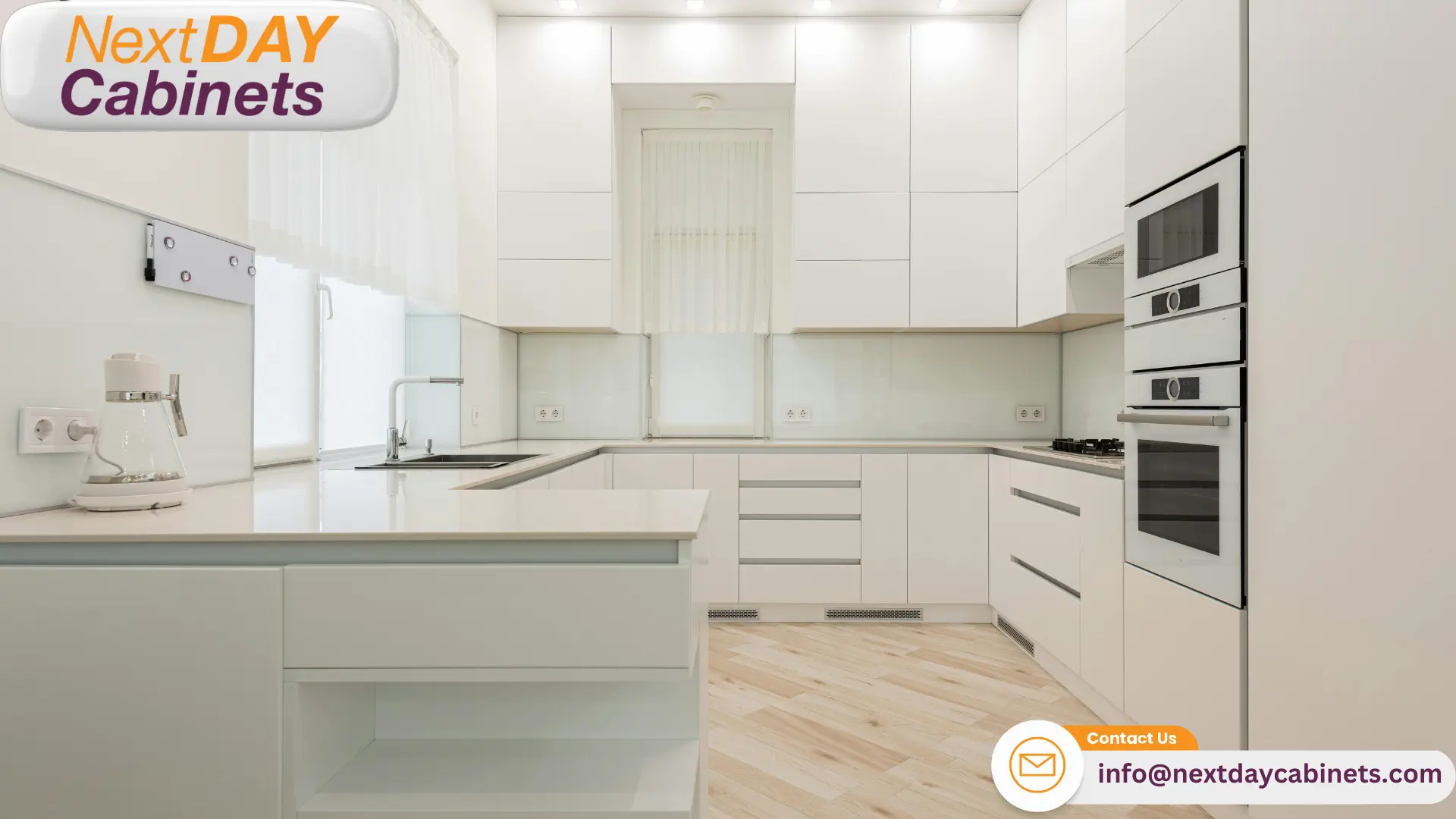
FAQs for Framed vs. Frameless Cabinets: Which Is Right for You?
What is the price difference between framed and frameless cabinets?
The price difference between framed and frameless cabinets can vary depending on several factors, including the cabinet materials, construction quality, and customization options. Generally, frameless cabinets tend to be slightly more expensive than framed cabinets due to their modern design and construction methods that maximize storage capacity and accessibility features.
Framed cabinets, known for their traditional aesthetics, are often more budget-friendly. Their classic construction includes a front frame that provides additional support, making them durable and less prone to sagging. However, the installation process can be more complex, increasing labor costs.
On the other hand, frameless cabinets, often called “European-style cabinets,” offer a sleek, contemporary look with full accessibility to the interior. This design philosophy focuses on clean lines and full overlay doors that align perfectly with the cabinet box, providing a seamless appearance. However, the precise construction and installation techniques required for frameless cabinets may lead to higher overall costs, particularly for customized or high-end materials.
When comparing framed vs. frameless cabinets, you must weigh your budget considerations against the desired aesthetic and functional benefits. While framed cabinets might appeal to those prioritizing traditional styles and sturdiness, frameless cabinets are ideal for modern design enthusiasts seeking streamlined looks and enhanced storage.
What are seamless cabinets?
Seamless cabinets are a popular design choice in modern kitchen renovations. They emphasize smooth, uninterrupted surfaces that enhance visual appeal and architectural harmony. While not a specific type of cabinet, “seamless” often refers to frameless cabinets with full overlay doors that create a sleek, cohesive appearance without visible gaps or frames.
This cabinet style is achieved through precise construction methods that ensure doors and drawers align perfectly with the cabinet box, eliminating visible seams or frames. This approach adds to the aesthetic appeal and improves functionality by maximizing interior space and accessibility features.
Seamless cabinets are favored in contemporary and minimalist kitchen designs where clean lines and a clutter-free look are essential. They can be constructed from various materials, including wood, laminate, or metal, and often feature hidden hardware for a streamlined finish.
For homeowners who prioritize modern design and an open, airy feel, seamless cabinets offer a perfect blend of style and practicality, making them a popular choice in kitchen and bathroom remodeling projects.
Are all frameless cabinets full overlay?
Not all frameless cabinets are full overlay, although full overlay is the most common option in this cabinet style due to its sleek, modern appearance. In a complete overlay design, cabinet doors and drawers cover the entire face of the cabinet box, leaving no visible gaps, which enhances the seamless look and maximizes storage capacity.
However, frameless cabinets can also be designed with partial overlay doors, where a portion of the cabinet box remains visible. This option may be chosen for specific design preferences or to achieve a particular visual effect. However, it is less common in frameless designs because it detracts from the streamlined, uninterrupted aesthetic for which this cabinet style is known.
The choice of overlay options in frameless cabinets can influence both the design philosophy and the overall feel of the kitchen. Full overlay doors are often preferred for their clean lines and modern appeal, while partial overlay can add subtle variation and customization to the look of the cabinets.
When comparing framed vs. frameless cabinets, it’s crucial to understand that the overlay style significantly impacts the cabinet’s appearance, accessibility, and storage space. This allows homeowners to select the best fit for their design vision and functional needs.
What is the difference between inset and frameless cabinets?
Inset and frameless cabinets represent two distinct design philosophies and construction methods, each offering unique visual appeal and functional benefits. Inset cabinets are framed cabinets where doors and drawers fit flush within the frame, creating a clean, classic look that emphasizes precision craftsmanship and traditional aesthetics.
Inset cabinets are often associated with high-end custom cabinetry due to their meticulous construction, which requires exact measurements and careful installation to ensure doors align perfectly within the frame. This design choice is popular in traditional, cottage, or shaker-style kitchens, where the framed look complements a timeless architectural style.
Frameless cabinets, in contrast, do not have a front frame, allowing full access to the cabinet interior. This construction method enhances storage capacity and accessibility, making it a preferred choice in modern and contemporary kitchen designs. Frameless cabinets typically feature full overlay doors that cover the entire cabinet box, providing a seamless and sleek appearance without any visible gaps or frames.
While inset cabinets offer a more classic and sophisticated look, frameless cabinets appeal to those seeking a minimalist, open design that maximizes space and streamlines kitchen organization. When choosing between these cabinet styles, consider your home’s overall design theme, the level of accessibility you desire, and how much maintenance and adjustment you are willing to perform over time.
Are framed or frameless cabinets better?
There’s no single answer to whether framed vs. frameless cabinets are inherently “better.” The best choice depends on your needs, style preferences, and budget.
Framed cabinets offer a classic look and robust construction, making them popular for traditional kitchens. They are generally more affordable and provide more flexibility in installation processes<span style=”font-weight: 400;”>. However, they might offer slightly less storage capacity than their frameless counterparts.
Frameless cabinets, or European-style cabinets, provide a sleek and modern aesthetic. They maximize storage capacity and offer a cleaner, minimalist look that is perfect for contemporary kitchens. However, they can be slightly more expensive and require more precise installation.
Ultimately, the “better” option depends on your priorities regarding cabinet styles, budget considerations<span style=”font-weight: 400;”>, desired visual appeal, and your home’s overall architectural harmony.
What are the different types of framing cabinets?
Framed cabinets are characterized by a frame constructed around the front of the cabinet box. This frame provides structural support and serves as a mounting point for doors and drawers. There are three main types of framed cabinets:
- Full Overlay: The cabinet door covers the frame, providing a seamless and contemporary look. This style is popular for achieving a clean and modern aesthetic.
- Partial Overlay: The cabinet door partially covers the frame, exposing a small portion of the frame. This is a classic style that offers a more traditional look.
- Inset: The cabinet door sits flush with the frame, creating a sophisticated and custom-built appearance. This style requires precise craftsmanship and is often found in high-end kitchens.
Are frameless cabinets better?
Frameless cabinets are not inherently “better,” but they offer distinct advantages that make them popular for modern kitchens. Their design philosophy prioritizes clean lines and maximum storage capacity. Here’s why some homeowners prefer frameless cabinets:
- Sleek and Modern Aesthetics: The absence of a face frame creates a streamlined and minimalist look that aligns with contemporary design trends.
- Increased Storage Space: Frameless cabinets offer more usable space without a frame obstructing the interior, which is particularly beneficial for smaller kitchens.
- Easy Access: Wider openings make storing and retrieving large items like pots, pans, and appliances easier.
- Variety of Customization Options: Frameless cabinets offer a wide range of cabinet materials, finishes, and overlay options to personalize your kitchen design.
However, potential drawbacks, such as the need for precise installation and potentially higher costs compared to framed cabinets, should be considered.
What are frameless cabinets called?
Frameless cabinets are often referred to as European-style cabinets due to their popularity in European kitchen design. This style emphasizes clean lines, functionality, and efficient use of space.
What is better, frameless or framed cabinets?
The choice between frameless and framed cabinets ultimately comes down to personal preference and the overall design aesthetic you want to achieve in your kitchen. Frameless cabinets offer a sleek, modern look with more accessible storage space, while framed cabinets have a more traditional appearance that complements classic or rustic design styles. Choose the style that best fits your design goals and personal taste.
What are the disadvantages of frameless cabinets?
The main disadvantage of frameless cabinets is that they can be trickier to install, especially if the walls are uneven. They also rely more on the quality of construction to provide rigidity without a face frame. However, these issues can be mitigated with proper installation and high-quality hardware.
Are framed cabinets more expensive?
Framed cabinets are generally more expensive than frameless cabinets, with custom quotes often 20-30% higher. However, the cost difference can vary depending on the manufacturer and materials used. Some frameless cabinet lines may be more expensive than framed options.
What does framed cabinet mean?
Framed cabinets have a face frame a wooden structure attached to the front of the cabinet box. The doors and drawers are mounted on this frame, creating a more traditional look. The frame adds stability and rigidity to the cabinet.
Are framed cabinets more expensive?
Yes, framed cabinets are often more expensive than frameless cabinets, especially for custom or semi-custom options. The face frame and additional materials required can increase the cost. However, the price difference can vary depending on the manufacturer and materials used.
In summary, both framed and frameless cabinets have their advantages and disadvantages. Frameless cabinets offer a modern look and more storage space, while framed cabinets have a traditional aesthetic and can be more rigid. The choice ultimately depends on your design preferences, budget, and the overall style of your kitchen. Consulting with a professional cabinet maker can help you determine the best option for your needs and home.
At NextDAY Cabinets, we offer a wide range of cabinets to suit your style and needs, whether you prefer the sleek lines of frameless cabinets or the classic charm of framed cabinets. Contact us today to explore our selection and find the perfect cabinets for your kitchen renovation!

Hear from Our Delighted Clients About Framed vs. Frameless Cabinets
Plamena Panayotova, Long-term Customer
Plamena Panayotova has been working with NextDay Cabinets for four years. She praises team members Jolanta and Guven for their availability and readiness to help, even with tight deadlines. She commends the office staff, including Uliana, for their friendliness and competence. Plamena highlights the excellent product quality, beautiful color options in stained and painted wood, and competitive prices.
Ruby-jo Sarrol, a Recent Kitchen Remodeler
Ruby-jo Sarrol recently completed a kitchen remodel with the help of Guven at NextDay Cabinets. She appreciated Guven’s patience and design expertise, noting his ability to suggest cabinet sizes and types for different areas. While some cabinets needed replacement due to construction flaws, Ruby-jo remains satisfied with Guven’s overall service.
Don Schuetz, Professional Kitchen & Bath Remodeler
As an experienced kitchen and bath remodeler, Don Schuetz chooses NextDay Cabinets for their unbeatable value. After extensive market research, he finds their offerings to be the best in the industry. Don particularly praises team member Meera for her helpful nature and great attitude. He emphasizes the company’s reliability in following through on its commitments and suggests that any negative experiences might be outliers or due to challenging customers.
Choose NextDay Cabinets for your wholesale cabinet needs and experience the same level of satisfaction as Plamena Panayotova, Ruby-jo Sarrol, and Don Schuetz. Our dedicated team excels in providing high-quality cabinets, offering expert design assistance, and ensuring customer satisfaction across various projects.
From long-term partnerships with professionals to first-time remodelers, we pride ourselves on our attentive service, design expertise, and commitment to meeting deadlines. Our team, including standout members like Jolanta, Guven, Uliana, and Meera, is known for their competence, patience, and willingness to go the extra mile for our customers.
At NextDay Cabinets, you’ll find a wide range of beautiful cabinet options with competitive pricing, making us the go-to choice for homeowners and industry professionals. Our quality focus, knowledgeable staff, and customer-first approach ensure that your cabinet selection and installation process will be smooth and satisfying.
Whether planning a kitchen remodel bathroom remodel, working on multiple projects, or seeking a reliable cabinet supplier for your business, NextDay Cabinets is committed to exceeding your expectations with our product quality, design services, and outstanding customer support.
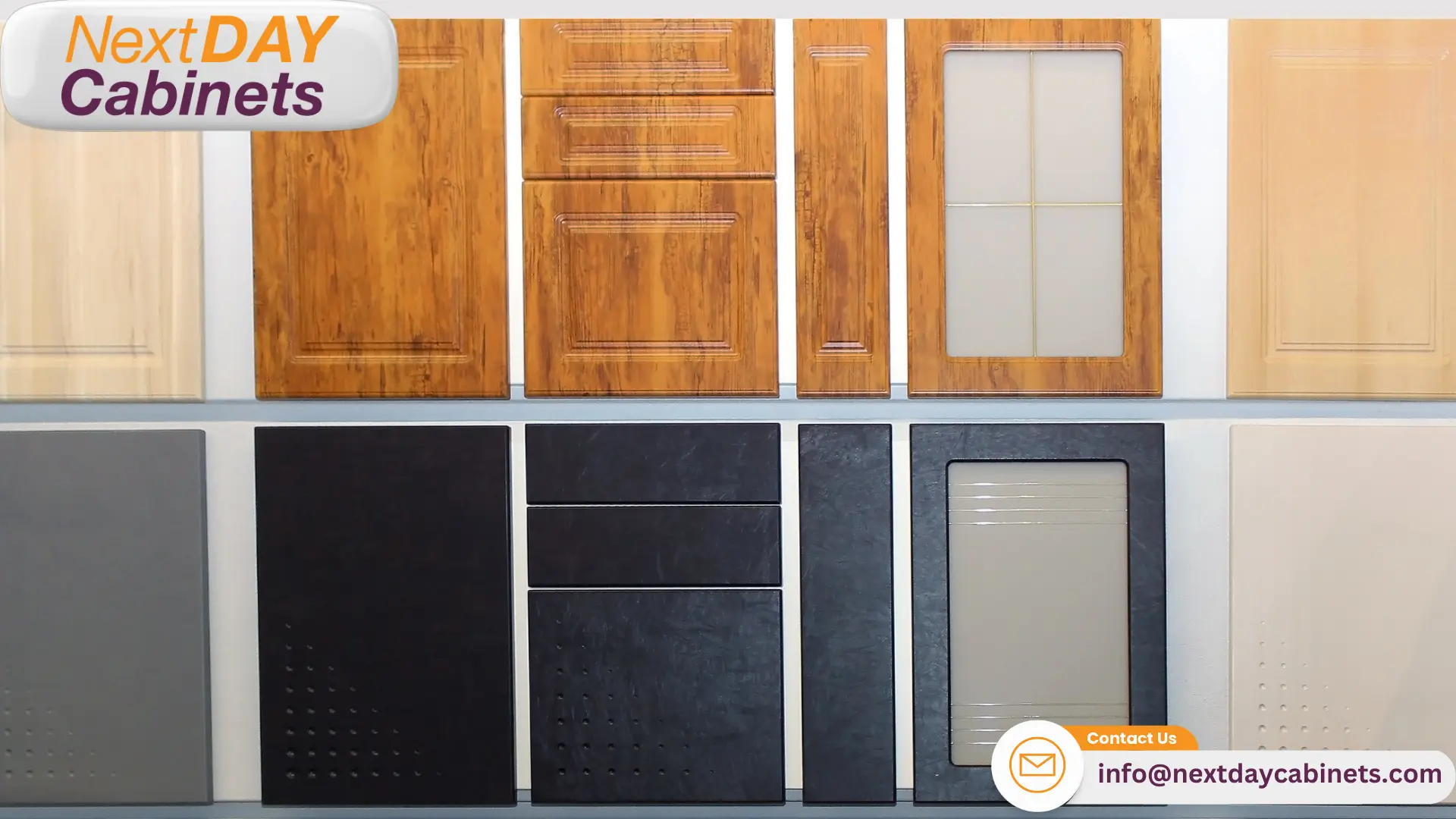
Transform Your Home with NextDAY Cabinets
NextDay Cabinets offers a wide range of high-quality kitchen cabinets and vanities at affordable prices. As the Mid-Atlantic’s best cabinet wholesaler, we serve six locations: Chantilly, Alexandria, Woodbridge, Richmond, Beltsville, and Chicago.
Visit Our Showrooms
- Chantilly Showroom: 14000 Thunderbolt Pl Suite K, Chantilly, VA 20151
- Alexandria Showroom: 5655 General Washington Dr., Suite E, Alexandria, VA 22312
- Woodbridge Showroom: 3099 PS Business Center Dr, Woodbridge, VA 22192
- Richmond Showroom: 3985 Deep Rock Rd, Richmond, VA 23233
- Beltsville Showroom: 5801 Ammendale Rd, Beltsville, MD 20705
- Chicago Showroom: 1801 Estes Ave, Elk Grove Village, IL 60007
Why Choose NextDAY Cabinets?
- Guaranteed Lowest Price: We ensure customer happiness and loyalty by providing top-quality construction at low factory-direct prices.
- Fast Lead Times: We offer some of the fastest lead times in the industry, with many orders ready in just 3-5 days.
- Professional Design Services: Our experienced design consultants help you create the perfect kitchen for your needs.
- High-Quality Products: All our cabinets are made from 100% solid wood and are KCMA certified, ensuring durability and environmental safety.
NextDAY Cabinets offers the best American made cabinet brands like:
Crestwood, Decora, Forevermark Cabinetry, Mantra, Marsh, Nations Cabinetry, Waypoint, WellKraft Cabinetry, Wolf Home Product in Mid-Atlantic area with 6 showrooms in Chantilly, Alexandria, Woodbridge, Richmond, Beltsville, and Chicago. Check out the exciting framed vs frameless cabinets at NextDAY Cabinets now!
Contractors, Dealers, and Builders! Are You Ready to Transform Homes?
Visit our Gallery now! Contact us and start your journey toward modern homes today.
Conclusion
The choice between framed and frameless cabinets ultimately depends on individual preferences, budget constraints, and the home’s overall design aesthetic. Both styles offer unique advantages and potential drawbacks that homeowners must carefully consider before deciding.
Framed cabinets provide a traditional look and enhanced structural stability, making them ideal for homeowners seeking a classic aesthetic and durability. Frameless cabinets offer a modern appearance and maximized storage space, appealing to those who prioritize contemporary design and efficient use of interior cabinet volume.
When selecting cabinet styles, homeowners should consider installation requirements, material quality, and long-term maintenance needs. A comprehensive comparison of these factors can help guide the decision-making process:
| Factor | Framed Cabinets | Frameless Cabinets |
|---|---|---|
| Aesthetic | Traditional | Modern |
| Storage Space | Slightly reduced | Maximized |
| Structural Stability | Higher | Adequate |
| Installation Complexity | Moderate | Higher |
| Cost | Generally lower | Often higher |
Ultimately, deciding between framed and frameless cabinets should align with the homeowner’s vision for their space, considering immediate needs and long-term satisfaction. Consulting with design professionals and reputable cabinet suppliers can provide valuable insights and ensure a successful kitchen or bathroom renovation project.
